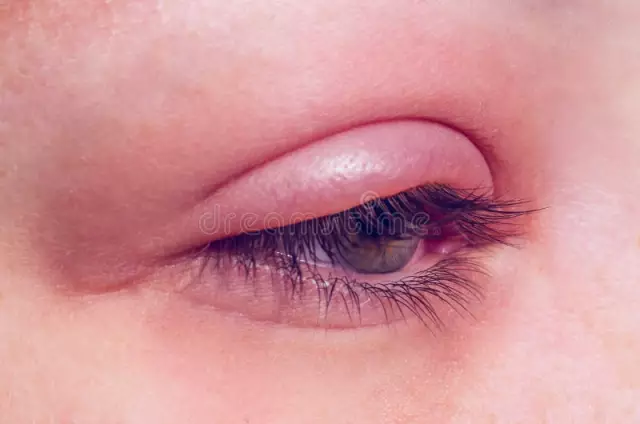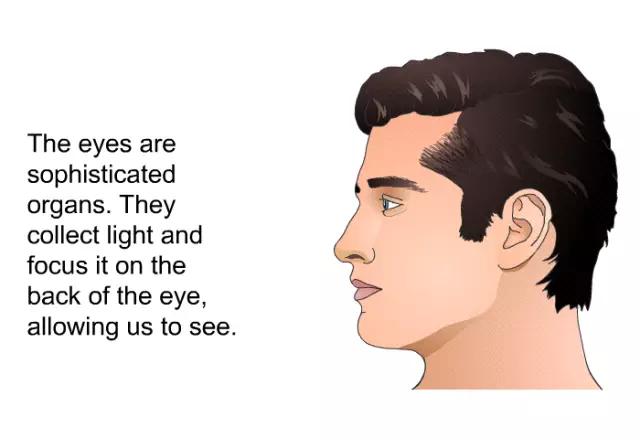- Author Rachel Wainwright [email protected].
- Public 2023-12-15 07:39.
- Last modified 2025-11-02 20:14.
Pilocarpine
Pilocarpine: instructions for use and reviews
- 1. Release form and composition
- 2. Pharmacological properties
- 3. Indications for use
- 4. Contraindications
- 5. Method of application and dosage
- 6. Side effects
- 7. Overdose
- 8. Special instructions
- 9. Application during pregnancy and lactation
- 10. Use in childhood
- 11. Drug interactions
- 12. Analogs
- 13. Terms and conditions of storage
- 14. Terms of dispensing from pharmacies
- 15. Reviews
- 16. Price in pharmacies
Latin name: Pilocarpine
ATX code: S01EB01
Active ingredient: pilocarpine (pilocarpine)
Producer: Moscow Endocrine Plant, Federal State Unitary Enterprise (Russia), Tatkhimpharmpreparaty, OJSC (Russia), Farmak, PJSC (Ukraine), Update PFC, CJSC (Russia), Sintez, OJSC (Russia)
Description and photo updated: 2019-27-08
Prices in pharmacies: from 25 rubles.
Buy

Pilocarpine is a methylimidazole derivative, a drug that has a direct m-cholinomimetic effect; used in ophthalmology.
Release form and composition
Dosage form - eye drops 1% (1 ml each in dropper tubes with a valve, in a cardboard box 1, 2, 5 or 10 tubes; 1.3 ml each in dropper tubes, in a cardboard box 1, 2 or 5 tubes; 1.5 ml, 2 ml or 5 ml in dropper tubes, in a cardboard box 1, 2, 4, 5 or 10 tubes; 2 ml in dropper tubes with a valve, in a cardboard box 5 or 10 tubes; 5 each ml in bottles, 5 or 10 ml in polyethylene bottles, 5 ml in polymer dropper bottles, 5 ml in glass bottles with a dropper cap, in a cardboard box 1 bottle; 5 ml in bottles with a dropper cap, in pack of cardboard 1 or 5 bottles; 10 ml each in polymer dropper bottles, in a pack of cardboard 1 or 2 bottles; each pack also contains instructions for the use of Pilocarpine).
Active ingredient: pilocarpine hydrochloride, in 1 ml drops - 10 mg.
Additional components: water for injection and boric acid.
Pharmacological properties
Pharmacodynamics
The drug has an anti-glaucoma and miotic effect, is an m-cholinomimetic.
Due to the use of the drug, the circular (miosis) and ciliary (spasm of accommodation) muscles contract, the angle of the anterior chamber of the eye increases (the root of the iris is pulled back), the permeability of the trabecular zone increases (the trabecular zone is stretched, the blocked sections of the Schlemm canal are opened), the outflow of aqueous humor from the eye improves … As a result, there is a decrease in intraocular pressure.
Instillation of 1% pilocarpine solution in primary open-angle glaucoma leads to a decrease in intraocular pressure by 25-26%. The effect begins to develop 30-40 minutes after the drug is applied, the maximum is observed after 90-120 minutes, the total duration of the therapeutic action is from 4 to 8 hours.
The drug allows you to control intraocular pressure for 24 hours, while the induced myopia, which develops during the first hours, quickly decreases, its value is usually not higher than 0.5 diopters.
Pharmacokinetics
Pilocarpine penetrates well through the cornea. Absorption in the conjunctival sac is practically not observed, while the substance is well absorbed through the conjunctiva.
The time it takes to reach the maximum concentration in the intraocular fluid is 30 minutes. It is retained in the tissues of the eye, due to which its T 1/2 (half-life) from the tissues of the eye is extended (ranges from 1.5 to 2.5 hours).
The substance is not metabolized in the tissues of the eye. Excretion is carried out with intraocular fluid in an unchanged form. Pilocarpine is converted to an inactive form, which is provided by hydrolysis in blood serum and liver. T 1/2 from plasma - about 30 minutes.
Indications for use
- Acute attack of glaucoma;
- Chronic open-angle glaucoma;
- Secondary glaucoma (pigmentary degeneration of the retina, acute obstruction of the retinal arteries, thrombosis of the central retinal vein, atrophy of the optic nerve);
- Corneal abscess.
Also, Pilocarpine eye drops are prescribed after instillation of mydriatics, if it becomes necessary to narrow the pupil.
Contraindications
- Irit;
- Iridocyclitis;
- Conditions and diseases of the eyes in which miosis is undesirable (including after surgery);
- Age under 18;
- Hypersensitivity to drug components.
Carefully:
- History of retinal detachment;
- High myopia in young patients.
Pilocarpine, instructions for use: method and dosage
Pilocarpine eye drops are used conjunctivally.
Doses and frequency of application in each case are determined individually for each patient.
In primary glaucoma, 1-2 drops are prescribed 2-4 times a day. The duration of treatment depends on the level of intraocular pressure. If necessary, beta-blockers are additionally prescribed.
In an acute attack of angle-closure glaucoma, the drug is used according to the following scheme: within 1 hour - 1 drop every 15 minutes, during the 2nd and 3rd hours - 1 drop every 30 minutes, during the 4th-6th th hour - 1 drop every 60 minutes, then - 1 drop 3-6 times a day. The duration of treatment is determined by the moment when it is possible to completely stop the attack.
Side effects
The drug is generally well tolerated, in rare cases headache occurs. With prolonged use, there is a risk of developing pronounced miosis (1-1.5 mm in diameter), contact dermatitis of the eyelids and follicular conjunctivitis.
Overdose
The main symptoms are: headache, persistent miosis, visual impairment, pain in the eye.
Therapy: cancellation of Pilocarpine, instillation of antagonist drugs, including tropicamide, atropine.
special instructions
Adequate and strictly controlled studies on the safety of the use of Pilocarpine during pregnancy and lactation have not been carried out, so the drug can be prescribed only if the intended benefits outweigh the possible risks.
In patients with the initial stage of cataract, the myotic effect of the drug can cause transient visual impairment.
During therapy, regular monitoring of intraocular pressure is required.
Influence on the ability to drive vehicles and complex mechanisms
Constriction of the pupil can cause disturbances in dark adaptation, therefore, after instillation of eye drops, care should be taken when performing potentially hazardous types of work and driving in poor light or at night. It should also be borne in mind that at the beginning of treatment in young patients, accommodation spasm may develop, which reduces visual acuity.
Application during pregnancy and lactation
During pregnancy / lactation, pilocarpine is prescribed under medical supervision after assessing the ratio of the expected benefit to the possible risk.
Pediatric use
For patients under 18 years of age, the drug is not prescribed.
Drug interactions
Pilocarpine can be used in combination with beta-blockers, sympathomimetics, carbonic anhydrase inhibitors.
Atropine and other m-anticholinergics are pilocarpine antagonists.
With the simultaneous use of adrenostimulants, antagonism of the action (on the diameter of the pupil) can be observed.
Mezaton and timolol reduce the production of intraocular fluid and thereby increase the decrease in intraocular pressure.
Anticholinesterase agents enhance the m-cholinostimulating activity of pilocarpine; phenothiazine derivatives, tricyclic antidepressants, clozapine and chlorprothixene - reduce.
During general anesthesia with fluorothane in patients undergoing treatment with Pilocarpine eye drops, it is possible to lower blood pressure and develop bradycardia.
Analogs
Pilocarpine analogs are: Pilocarpine with methylcellulose, Fotil, Fotil Forte, Pilocarpine-DIA, Pilocarpine Bufus, Oftan Pilocarpine, Pilocarpine Prolong, Pilocarpine-Ferein, Pilocarpine-long, Saladzhen.
Terms and conditions of storage
Store at temperatures from 8 to 15 ºС in a place protected from light and out of reach of children.
Shelf life - 3 years, after the first opening of the bottle - 28 days.
Terms of dispensing from pharmacies
Dispensed by prescription.
Reviews about Pilocarpine
Reviews of Pilocarpine are predominantly positive. They note its high efficiency, affordable cost and good tolerance. The development of side effects has been reported on rare occasions.
Price for Pilocarpine in pharmacies
The approximate price for Pilocarpine (1 dropper bottle of 5 ml) is 30 rubles.
Pilocarpine: prices in online pharmacies
|
Drug name Price Pharmacy |
|
Pilocarpine 1% eye drops 1.5 ml 5 pcs. RUB 25 Buy |
|
Pilocarpine 1% eye drops 5 ml 1 pc. RUB 27 Buy |
|
Pilocarpine 1% eye drops 5 ml 1 pc. 43 rbl. Buy |

Maria Kulkes Medical journalist About the author
Education: First Moscow State Medical University named after I. M. Sechenov, specialty "General Medicine".
Information about the drug is generalized, provided for informational purposes only and does not replace the official instructions. Self-medication is hazardous to health!






